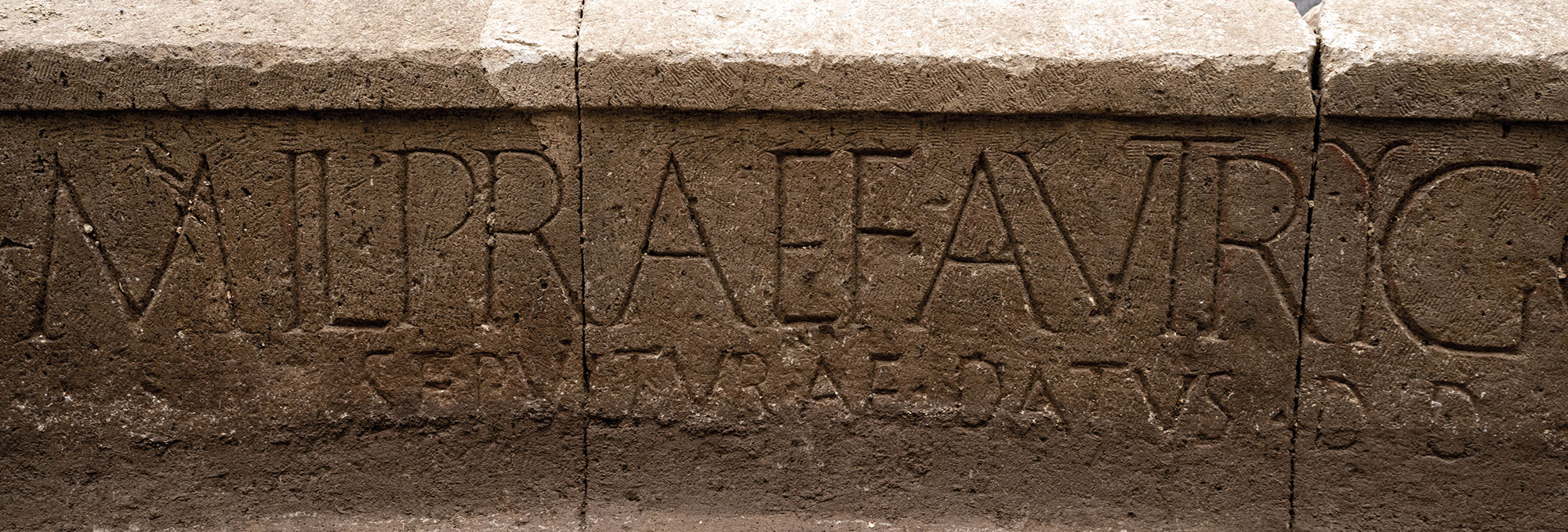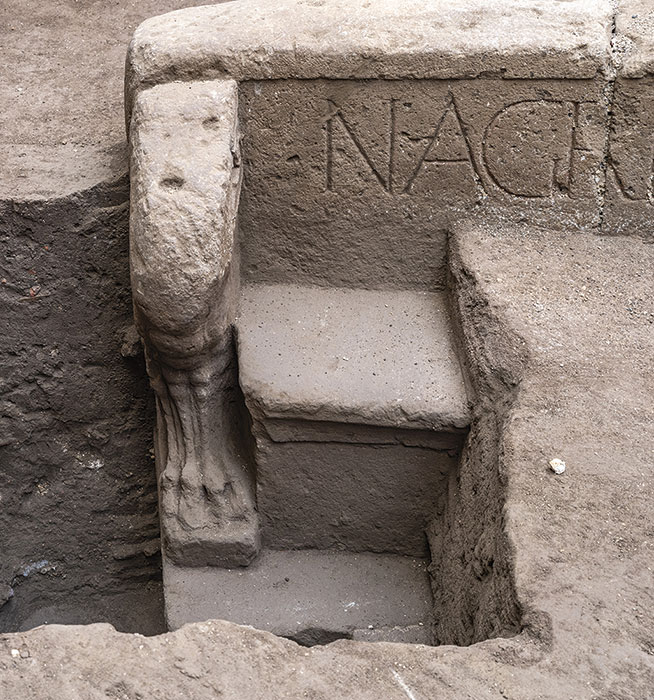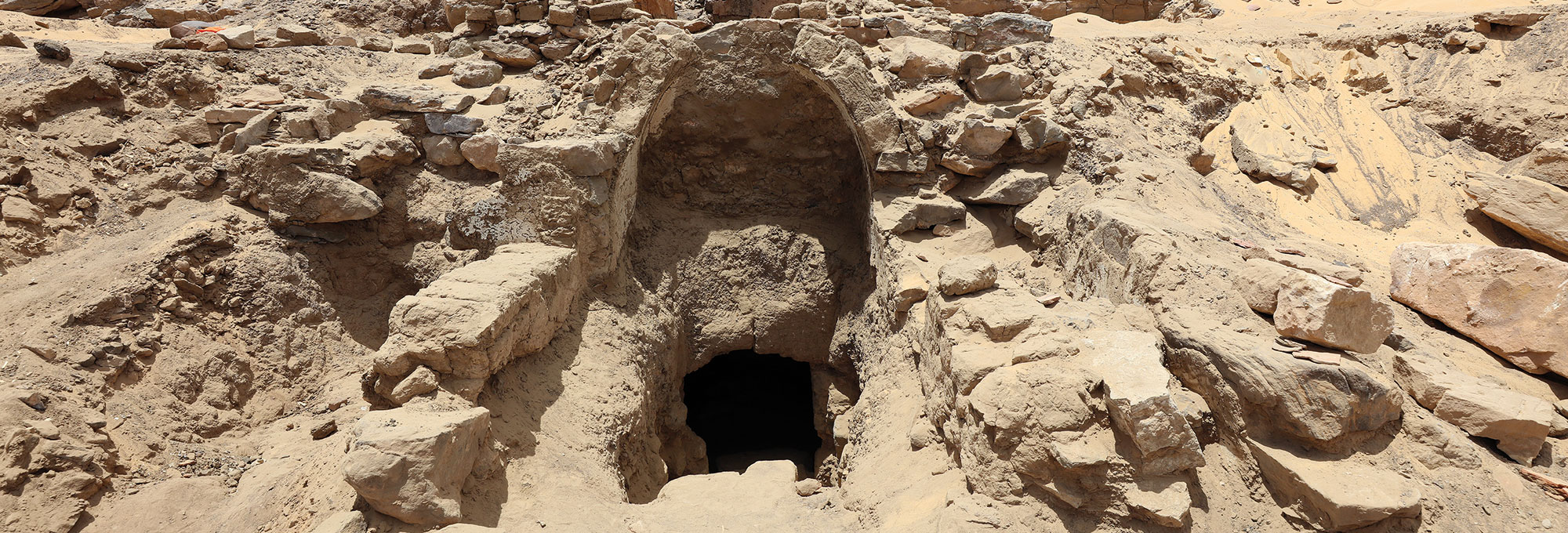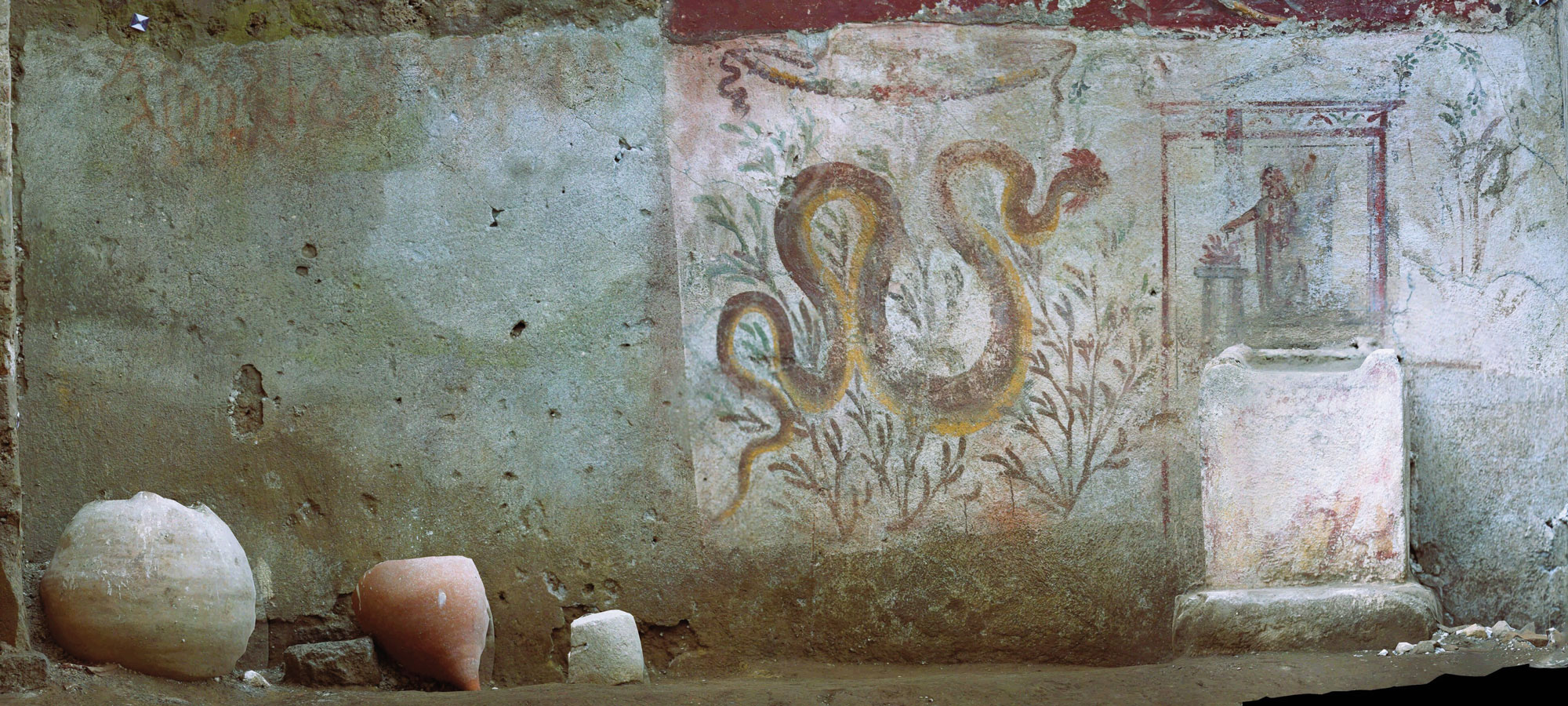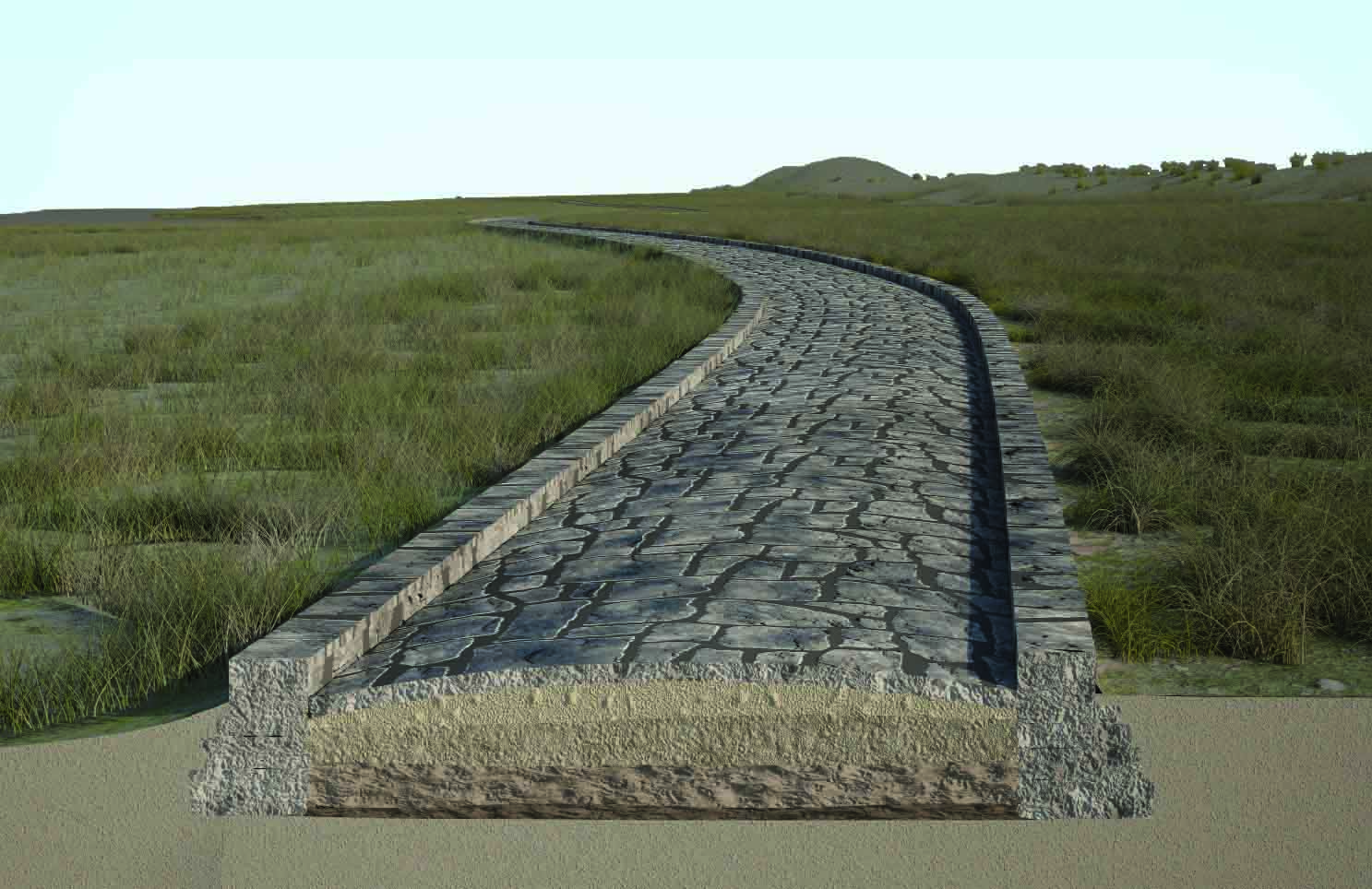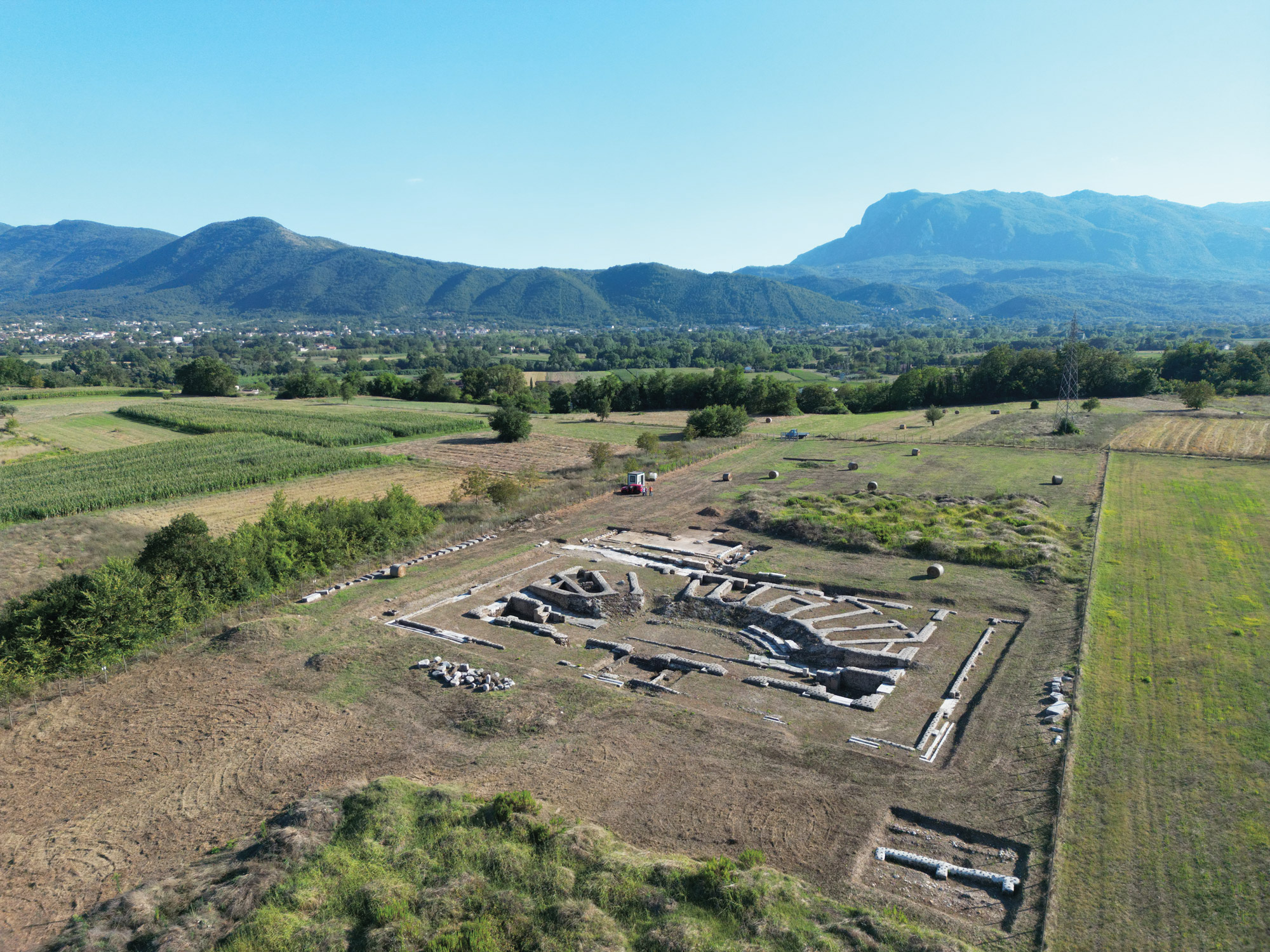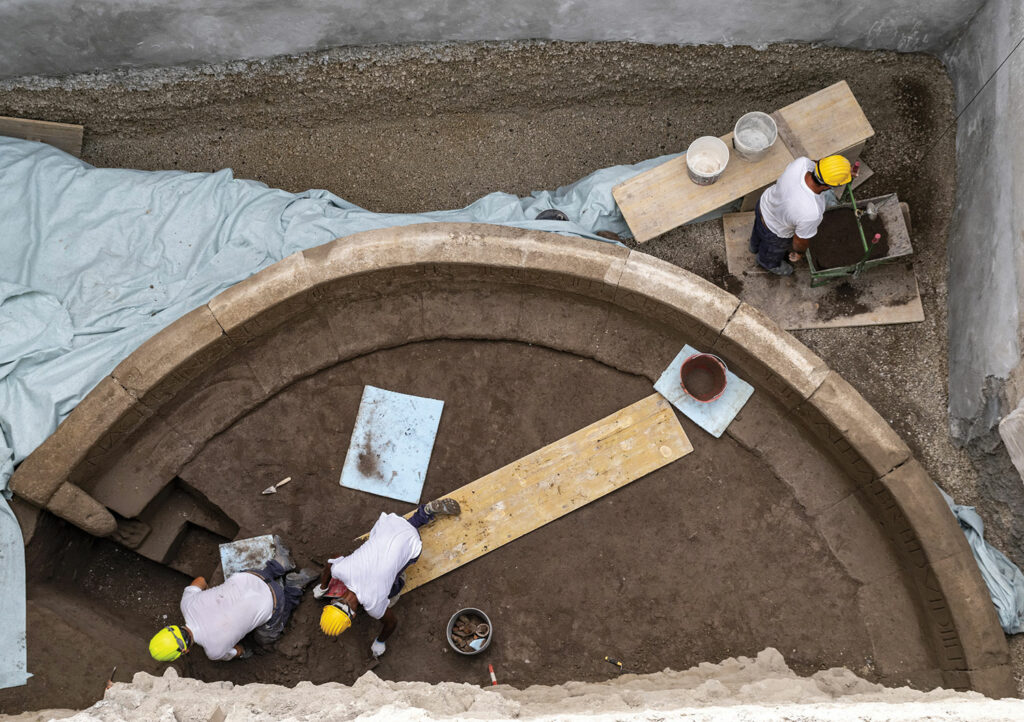
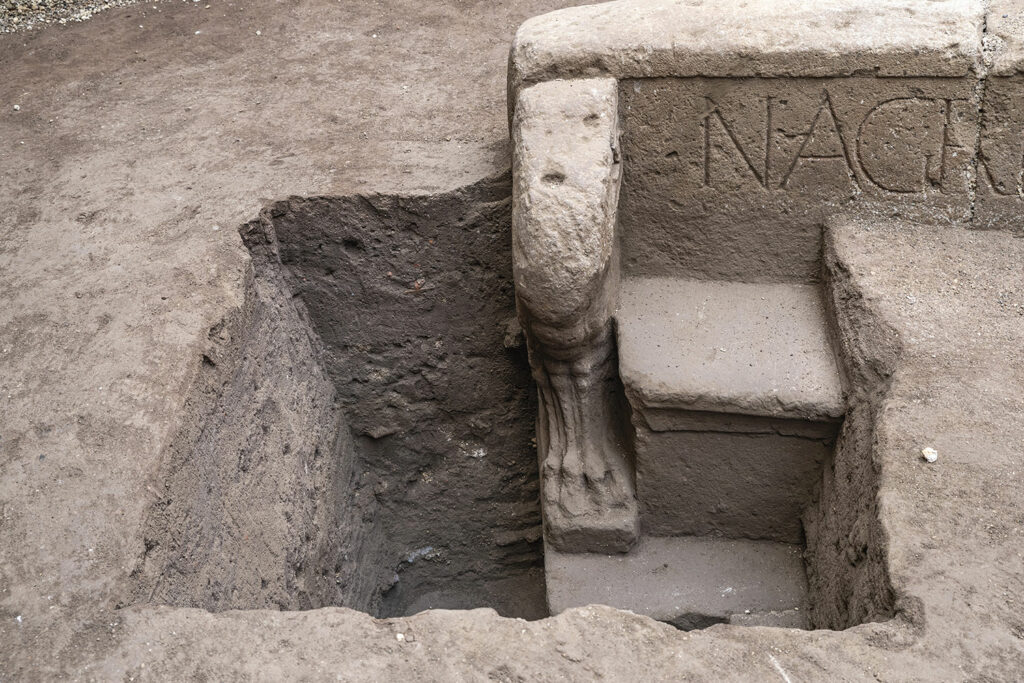
An ornate tomb likely belonging to a high-ranking soldier who served on the front lines in Spain under the Roman emperor Augustus (reigned 27 b.c.–a.d. 14) has been discovered in Pompeii. After the soldier retired from military service, he withdrew to the Bay of Naples and received the promise of a commemorative monument on public land, a great honor. “Being awarded a public funerary monument was far from common,” says classicist Maria Chiara Scappaticcio of the University of Naples Federico II. “This distinction represents a formal recognition by Pompeii of the man’s prominence.”
Workers discovered the tomb while renovating Pompeii’s modern library. Around 30 feet below ground level, they unearthed a semicircular complex known as a schola tomb, only eight of which have ever been found. These tombs resemble stone benches with carved lion’s feet at either end and were reserved to hold the urns of only the most prominent Pompeians.

An inscription carved into the bench’s backrest indicates that the tomb was dedicated to a man named Numerius Agrestinus Equitius Pulcher by order of the city council. The text lists the offices that Numerius earned, including military tribune, prefect of army engineers, and duumvir of Pompeii, the city’s highest elected office. Archaeologists were surprised, however, at another of Numerius’ offices, prefect of the Autrigones, a previously unknown position. The Autrigones were a Celtiberian tribe from the Spanish region of Cantabria who were conquered by Augustus during the Cantabrian Wars (29–19 b.c.). Scholars believe that Numerius was an important military leader who was given responsibility for supervising Cantabria during or after the war. “The recently discovered funerary inscription finally provides proof of a prefect overseeing the Cantabrians,” Scappaticcio says. “While the inscription’s brevity leaves much about the role uncertain, it confirms that Numerius Agrestinus held an important Augustan political office in Spain, and this discovery sheds light on an underexplored aspect of Roman provincial administration.”


